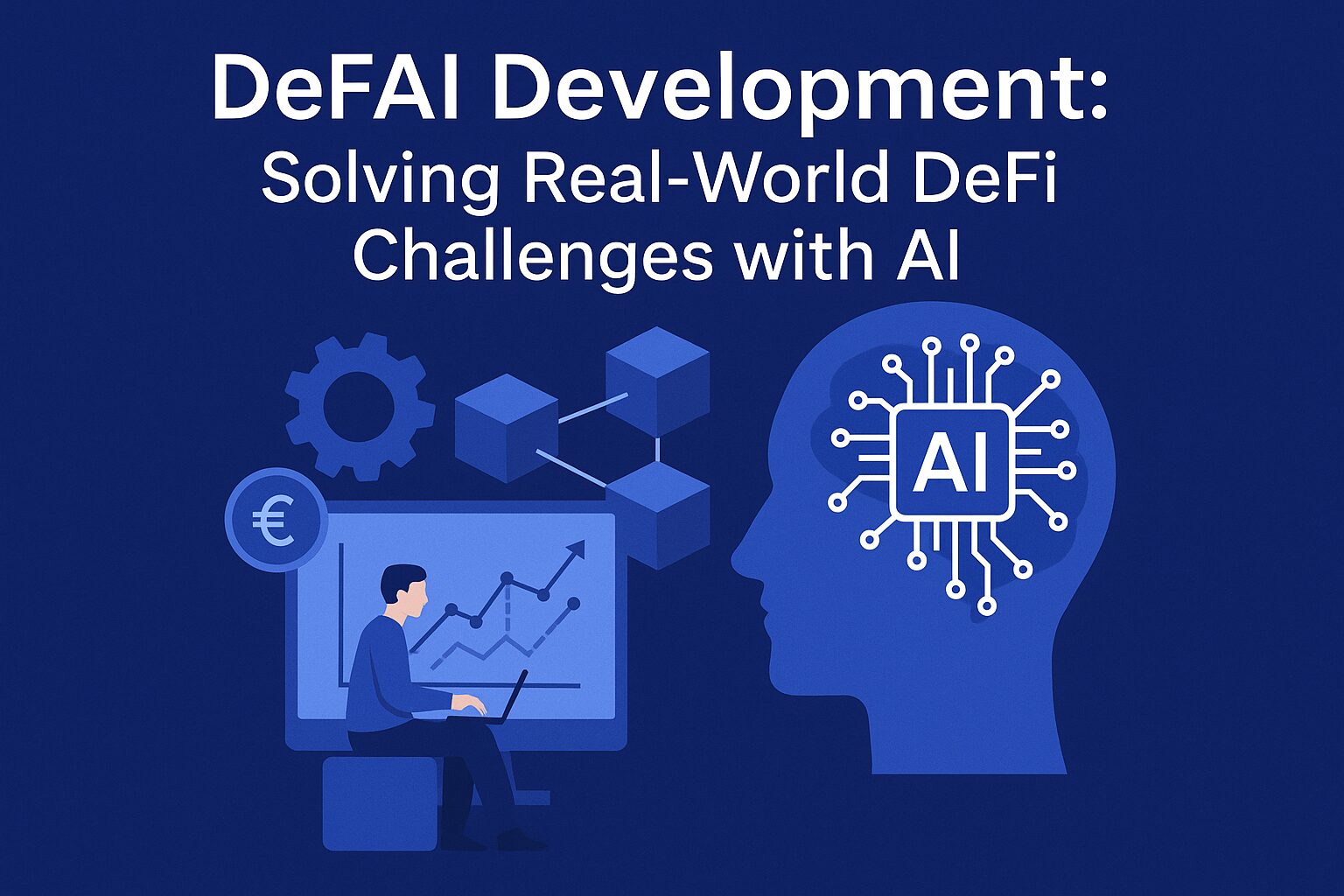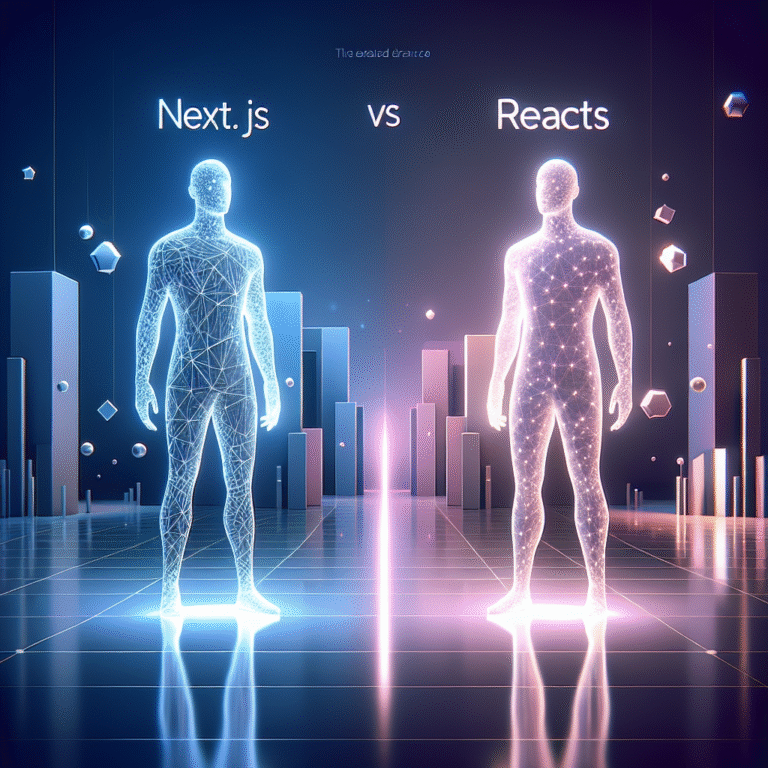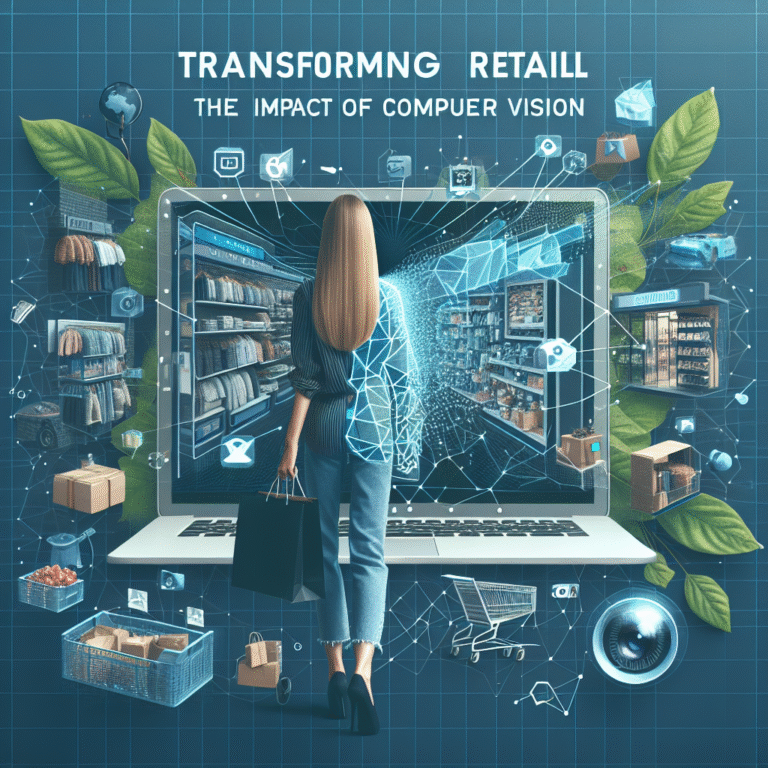DeFAI development services are changing the crypto world. The market cap has reached about $16.93 billion as of January 2025. This makes up 34.7% of the entire crypto AI market. DeFi and artificial intelligence combine to create smarter financial systems that work without traditional middlemen. AI knows how to analyze big data sets, spot patterns, and make smart predictions. This enables DeFi platforms to work better and offer customized services to users.
The sector’s growth tells an impressive story. The AI agents market will expand from USD 5.1 billion in 2024 to USD 47.1 billion by 2030. This shows a strong yearly growth rate of 45.6%. Businesses and investors are now rushing to make use of AI-integrated decentralized systems. Our DeFi application development services help make smarter decisions, cut down human error, and execute trades immediately. These improvements substantially boost the decentralized finance space’s capabilities.
This piece explores DeFAI’s basics, core parts, and solutions to real-life DeFi challenges. We’ll look at industries that benefit from this tech merger. DeFAI keeps reshaping the scene of finance. Understanding its uses has become crucial to compete in the fast-changing blockchain world.
What is DeFAI and Why It Matters in 2025
DeFAI represents a sophisticated ecosystem where decentralized finance (DeFi) meets artificial intelligence (AI). DeFAI has become a crucial sector in the crypto world since 2025. This emerging field combines DeFi’s blockchain-based financial systems with AI-driven analytics and automation to create smarter financial applications.
Definition of DeFAI: Decentralized Finance with Artificial Intelligence
DeFAI combines DeFi’s decentralized, transparent financial operations with AI’s computational intelligence. Standard DeFi tokens work as assets or governance tools, but DeFAI tokens use machine learning algorithms, autonomous decision-making, and predictive analytics. These AI-powered applications execute transactions, manage portfolios, and interact with smart contracts without human input. They serve as “AI co-pilots” for crypto finance. The DeFAI market will grow from USD 1.00 billion to USD 10.00 billion by 2025’s end.
How DeFAI is different from traditional DeFi platforms
Traditional DeFi uses self-executing smart contracts on blockchains like Ethereum & Solana. DeFAI builds on this foundation with an intelligent layer. DeFAI improves automation beyond simple smart contract execution through AI agents that handle complex tasks like trading, yield optimization, and risk management. These agents learn from outcomes to refine their strategies. DeFAI systems analyze on-chain transaction data and off-chain sources like news or social media, which helps them make better decisions.
Key drivers behind the rise of DeFAI
These factors propel DeFAI adoption:
- Growing complexity: DeFi’s evolution has made products less available to everyday users, creating a need for simpler interfaces
- Enhanced security: AI-powered anomaly detection identifies suspicious transactions and vulnerabilities early
- Personalization: DeFAI tokens adapt financial products to each user’s risk profile and priorities
- Scalability: Intelligent token mechanisms help projects scale operations effectively
DeFAI can overcome traditional DeFi’s challenges like price volatility and security vulnerabilities through predictive analytics and intelligent automation. DeFAI aims to make decentralized finance more user-friendly, intelligent, and autonomous.
Core Components of DeFAI Development Services
The technical architecture of DeFAI combines several connected elements that create intelligent financial systems on the blockchain. These core building blocks power modern DeFAI development services.
AI-powered smart contract automation
Smart contracts become more powerful with AI that enables complex decisions without human input. The intelligent contracts use machine learning algorithms to optimize trading strategies, handle collateral, and predict market movements. These contracts can automate compliance checks and resolve disputes with up-to-the-minute data analysis, which improves efficiency and security. AI-powered contracts analyze historical data to create adaptive agreements that adjust their terms based on predictive analytics.
Real-time on-chain and off-chain data processing
DeFAI platforms need sophisticated data processing capabilities to work. Data processing platforms merge transactional, stream, and analytical processing from data silos into one system. They deliver ultra-low latencies with horizontal scalability and maintain strong security in data sources of all types. The platforms prepare data by extracting features, generating vector embeddings, and running AI models with up-to-the-minute analysis. DeFAI applications can make quick decisions based on blockchain events and external information.
AI agents for yield farming and portfolio rebalancing
AI agents work as independent programs that optimize financial strategies. These self-operating applications watch markets, find opportunities, and execute trades while managing risk and returns. The agents analyze APYs, gas fees, and impermanent loss to find profitable pools for staking or farming tokens. They rebalance portfolios regularly to maintain asset allocations. The agents’ performance improves over time as they evaluate different assets and adjust allocations.
Cross-chain interoperability and wallet integration
DeFAI applications operate on multiple blockchain networks through cross-chain functionality. Chainlink’s CCIP protocols enable secure token transfers and messages between different chains. This feature supports vital DeFAI use cases like cross-chain lending, yield optimization, and programmable token transfers. Wallet integration creates smooth user experiences by connecting users directly to DeFAI services. MetaMask’s 30 million active users can interact with decentralized applications through a single platform.
Real-World DeFi Challenges Solved by DeFAI
DeFAI solutions tackle key challenges that traditional DeFi platforms face by using smart automation and data analysis. These breakthroughs make decentralized finance more available, secure and work better.
Automated risk management using machine learning
Machine learning models change DeFi risk management by analyzing big volumes of transaction data, smart contract interactions and market trends to predict risks. These systems watch blockchain activities and spot anomalies that might signal malicious activity or hacks. AI agents can trigger alerts or take defensive actions when they detect suspicious patterns, which protects user funds and enhances platform security.
AI-driven credit scoring in DeFi lending platforms
Credit systems often leave out people without traditional banking histories. DeFAI solves this problem by creating synthetic credit profiles through wallet activity analysis, transaction history and social reputation. This method helps platforms offer undercollateralized loans to users who have strong on-chain reputations. To name just one example, see how Teller Finance employs blockchain records as proof of repayment history.
Reducing human error in decentralized exchanges (DEX)
Human errors cause up to 90% of workplace accidents and billions in business losses each year. Automated validation systems in DEX environments check data integrity live and trigger alerts when conditions drift from optimal ranges. This automation removes mistakes in trading, yield optimization and portfolio management tasks.
Natural language interfaces for DeFi dApps
Natural language processing makes DeFi available through conversation-based interfaces. Users can interact with complex financial platforms by asking simple questions or giving basic instructions. These NLP-powered chatbots help newcomers by providing support around the clock and guide them through complex processes efficiently.
Industries and Use Cases Benefiting from DeFAI
Industries worldwide now use DeFAI development services to create innovative solutions in financial markets. These applications show how artificial intelligence can improve decentralized systems through practical, revenue-generating methods.
DeFi staking platform development for retail investors
DeFi staking platforms let users earn passive income when they lock their cryptocurrency assets in common pools. AI integration helps these platforms:
- Review protocols and calculate potential returns automatically
- Redistribute assets to optimize yields with minimal risks
- Track immediate opportunities in lending, staking, and liquidity pools
The global DeFi staking market will likely exceed $40 billion by 2025, which shows growing investor confidence.
AI-improved asset management in financial services
AI portfolio management reshapes asset handling by analyzing big datasets that include market trends, on-chain data, and trading volumes. These systems handle trades and rebalance portfolios more precisely than humans. AI-powered tools like Optimus by Olas manage DeFi assets independently across multiple blockchains and adjust settings immediately to improve user experience.
Decentralized insurance with automated claims processing
AI algorithms detect anomalies and patterns that indicate fraudulent claims in decentralized insurance. Smart contracts execute insurance policies automatically when data meets predefined parameters. Flight delay insurance compensates travelers instantly without paperwork. This automation cuts administrative costs and reduces premiums.
DeFAI in real estate tokenization and valuation
Real estate tokenization turns property ownership into digital tokens that investors can buy, sell, or trade in parts on blockchain platforms. AI improves this process by analyzing property data, market trends, and economic indicators to determine accurate valuations. Deloitte expects $4 trillion of real estate will be tokenized by 2035, up from less than $0.30 trillion in 2024.
AI agents in decentralized trading bots
AI trading agents learn, adapt, and refine strategies continuously. These agents analyze extensive datasets, spot opportunities like arbitrage or market trends, and execute trades automatically, unlike traditional bots that follow fixed rules. Smart order routing helps bots trade efficiently and minimize losses from price changes.
Conclusion
DeFAI has emerged as a revolutionary force that transforms the decentralized finance ecosystem. This piece explores how DeFi and AI merge to create intelligent financial systems that work autonomously and optimize operations. Companies that implement these solutions gain substantial competitive advantages in risk management, asset optimization, and user experience.
AI-powered smart contracts, live data processing, autonomous agents, and cross-chain interoperability work together as core components to solve traditional DeFi’s long-standing challenges. These technologies have also cut down human error while strengthening security protocols in decentralized exchanges and lending platforms.
DeFAI development services’ biggest impact lies in making sophisticated financial tools available to more people, not just institutional investors. AI-driven credit scoring lets users get undercollateralized loans based on their on-chain reputation instead of traditional credit histories. User-friendly natural language interfaces help newcomers interact with complex DeFi applications through simple conversations.
Real-life applications show DeFAI’s versatility and value in various industries. These intelligent systems handle complex tasks automatically, from retail investor staking platforms to automated insurance claims processing. DeFAI’s market potential keeps growing fast, with projections showing an increase from approximately $1 billion to $10 billion by the end of 2025.
DeFAI will without doubt keep evolving and bring more sophisticated AI capabilities to decentralized finance. These technologies meet to create more than just small improvements – they radically alter how financial services work. Understanding and adopting DeFAI has become crucial for businesses and investors in the fast-moving blockchain world.
Key Takeaways
DeFAI represents the powerful convergence of decentralized finance and artificial intelligence, creating smarter, autonomous financial systems that solve critical challenges in traditional DeFi platforms.
• DeFAI market is exploding: Growing from $1 billion to projected $10 billion by end of 2025, representing massive opportunity for early adopters.
• AI agents automate complex tasks: From yield farming to portfolio rebalancing, AI eliminates human error while optimizing returns 24/7 without intervention.
• Smart contracts become intelligent: AI-powered contracts adapt in real-time using machine learning, moving beyond simple “if-then” conditions to predictive decision-making.
• Cross-industry applications drive adoption: From retail staking platforms to automated insurance claims, DeFAI democratizes sophisticated financial tools previously exclusive to institutions.
• Natural language interfaces break barriers: Conversational AI makes complex DeFi accessible to newcomers, removing technical complexity through simple voice commands.
The integration of AI into DeFi isn’t just an incremental improvement—it’s a fundamental transformation that makes decentralized finance more secure, efficient, and accessible to mainstream users. As this technology matures, businesses that embrace DeFAI development services will gain significant competitive advantages in the rapidly evolving blockchain landscape.
FAQs
Q1. What is DeFAI and how does it differ from traditional DeFi? DeFAI combines decentralized finance (DeFi) with artificial intelligence, creating smarter financial systems. Unlike traditional DeFi, DeFAI incorporates machine learning algorithms and autonomous decision-making to execute transactions, manage portfolios, and interact with smart contracts without constant human input.
Q2. How does DeFAI improve risk management in decentralized finance? DeFAI enhances risk management through machine learning models that analyze vast amounts of transaction data, smart contract interactions, and market trends. These systems continuously monitor blockchain activities, identify anomalies, and can trigger alerts or take defensive actions when detecting suspicious patterns.
Q3. Can DeFAI make decentralized finance more accessible to newcomers? Yes, DeFAI makes DeFi more accessible through natural language processing interfaces. These allow users to interact with complex financial platforms using simple questions or instructions in plain language, while AI-powered chatbots provide 24/7 support and guidance.
Q4. How does DeFAI impact credit scoring in DeFi lending platforms? DeFAI creates synthetic credit profiles using behavioral analytics of wallet activity, transaction history, and social reputation. This approach enables platforms to offer undercollateralized loans to users with strong on-chain reputations, potentially including individuals without conventional banking histories.
Q5. What are some real-world applications of DeFAI in different industries? DeFAI has various applications across industries, including AI-enhanced asset management in financial services, decentralized insurance with automated claims processing, real estate tokenization and valuation, and AI agents in decentralized trading bots. These applications demonstrate how AI can enhance decentralized systems in practical, revenue-generating ways.




